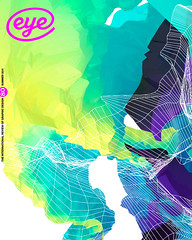Summer 2011
Out of the darkroom and into the light
Sue Steward considers the speed, the globalisation and the democratisation of digital photography
Twenty years is a small percentage of the 150-plus years of photography’s history. But the changes in its technical, compositional, theoretical and aesthetic meanings and functions have been dramatic.
As a former picture editor who inhabited Planet Analogue for a large part of my life, I have watched photography morph into something almost unrecognisable. Much has been abandoned: the tactile pleasure of prints, the never-failing magic of the printing process, the dedication of printers in newspaper darkrooms, the excitement of flicking through cabinets in specialist picture libraries now swallowed up by rapacious digitised agencies, the many priceless newspaper archives destroyed in the 1990s.
In 2009 we lost two crucial elements of the old order. Polaroids – those small, wet, glossy, square prints you dragged out of the camera, shook dry and watched as an image appeared like a tiny oil painting – turned out to have the lifespan of a mayfly. Andy Warhol may have elevated them into fine art, but Polaroid film expired in a blaze of publicity on 09/09/09. A month later we said goodbye to Kodachrome, the film that brought a palette of brightness, optimism and colourful romance into the postwar years. Slides, trannies, transparencies came back from processing in branded yellow plastic boxes, to be viewed on a lightbox through a loupe, an eyeglass that had to be a Steiner – mine cost 74 quid in New York in the late 1980s, and I treasure it … as an antique.
Another element of this evolution from analogue to digital is the slow, creeping death of the professional darkroom. In 2007, Richard Nicholson began documenting (in Kodachrome) the 204 still operating in London. When he completed the project in 2010, eight remained in operation.
Having paid homage to past technology, I must add that I love digital photography. I love the speed of working and viewing images on computers, watching how digital photography is mutating, changing our visual encounters, interpretations, skills and equipment. I love the way photography competitions are now thoroughly international because images can be pinged cheaply across the globe in an instant rather than being sent as expensive prints. Digital democratisation is unstoppable. And digital photography has become crucial for transmitting images from warzones, crises and scandalous revelations, from places photojournalists can’t reach.
I love the explosion of global interest in photography, the expansion of exhibition space for what until recently (shockingly) was not even considered art; how the business of ‘fine art’ photography is now discussed on the pages of the Financial Times; the number of academic texts on the theories around photography; and the rise of photobook publishing fairs. In parallel to ‘mondo digital’, professional photographers such as Susan Derges and Adam Fuss and scores of students are looping back to the medium’s analogue origins. They are devising fresh ways of making images based on nineteenth-century processes: the shadow-catchers of camera-less photography who are exploring Fox Talbot’s Calotypes, and the hugely expensive, time-consuming platinum process that Irving Penn re-introduced in the 1950s.
These arcane processes co-exist alongside technologies that allow the convergence of still images and movies through smartphones and multifunction cameras, and the galleries on screens and tablets and media walls, the instruments of the future that are literally ‘writing with light’. The contents, however – portraits, landscapes, documentary images – will never change.
Sue Steward is a writer, broadcaster and independent curator
First published in Eye no. 80 vol. 20.

